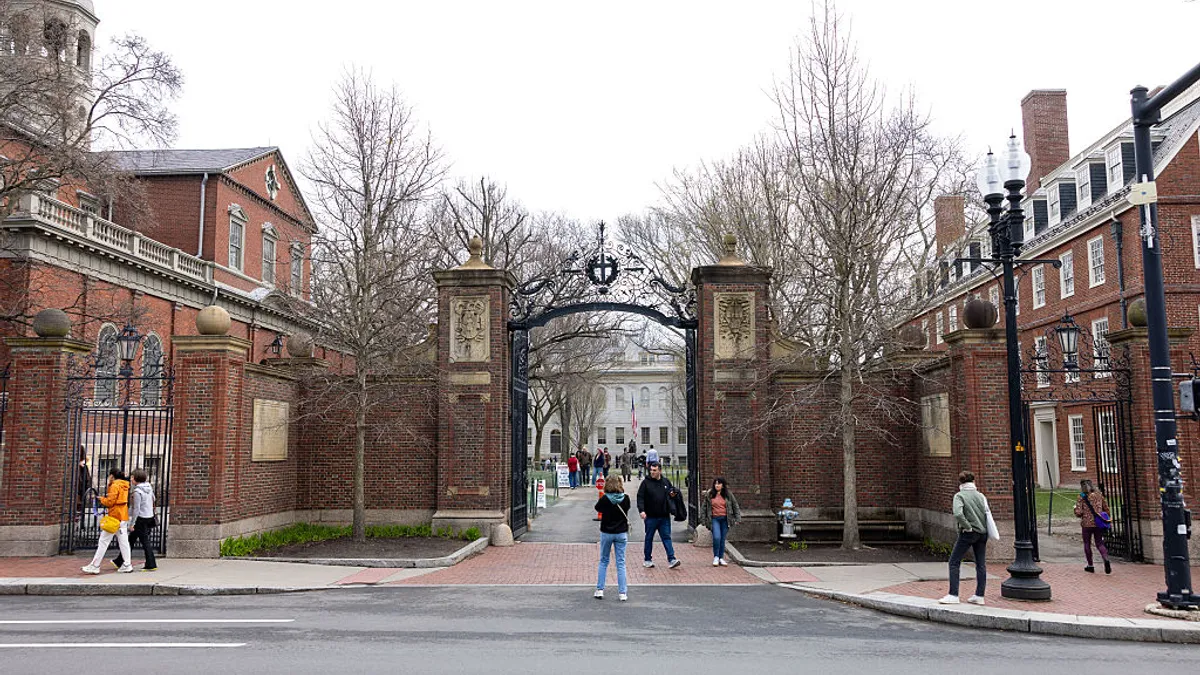Even before COVID-19 struck the University of Vermont, Suresh Garimella, its president, knew the institution faced serious financial pressures that needed to be addressed.
The number of high school seniors in the state was expected to decline, reducing one of the easiest-to-reach pools of new students. The university's high tuition made it increasingly difficult to attract out-of-state students. Its state subsidies, meanwhile, remained among the lowest in the country and seemed unlikely to change anytime soon.
So, in the middle of the pandemic, Garimella decided to move ahead with changes he believes will reduce costs and improve student satisfaction — changes many faculty members argue could diminish the university's standing as a "public Ivy" with a firm grounding in the liberal arts. While he has pushed for freezes on tuition and room and board fees to help attract students, he has also announced the elimination of the geology, religion and classics departments because few students majored in those areas.
"These changes began early in my presidency here," said Garimella, who took the helm of the university in July 2019. "We continue to pursue them irrespective of the pandemic. Too often, I think everyone's talking about the pandemic. To me, these are fundamental things that need to be done, and the pandemic made a few of those things more painful."
The University of Vermont is one of many institutions that were wrestling with long-term budget problems before COVID-19 added even more stress to their bottom lines. Because they were in such a shaky position to start with, those institutions can't absorb many more financial blows.
Many institutions are in a similar situation. Full-time equivalent enrollment at public colleges and universities dropped in 33 states and Washington, D.C., between 2018 and 2019, according to data from the State Higher Education Executive Officers Association. State government support for those institutions remained 8.7% per FTE below funding levels from before the Great Recession when accounting for inflation, SHEEO data shows.
Different state positions
In the short-term, public universities' financial future is still murky.
Nationwide, colleges and universities are poised to get around $23 billion from a COVID-19 relief package Congress passed in late December. While that amount is short of what higher education advocates hoped for, it could ease the impact on college and university budgets. Plus, President Joe Biden has called on Congress to give another $35 billion in emergency stabilization funds to higher education.
Most states, meanwhile, have seen tax revenue drops that could trigger additional program and spending cuts in the upcoming fiscal year. Higher education spending is frequently one of the first places state lawmakers cut when they need to balance their budgets.
Western Oregon University announced in November that it would eliminate majors in philosophy and anthropology, among several other cuts.
"Like many universities across the nation, we were already showing a budget deficit before COVID hit due to many factors, including decreasing enrollment, significantly reduced funding from our state legislature and rising personnel costs," explained Lisa Catto, a spokesperson for the university, in an email.
Administrators planned for a 2.5% enrollment drop last fall, but it turned out to be a 7.5% decrease. "We can't know to what degree COVID directly contributed to that number, as we can't ask students why they chose not to enroll," she wrote.
Last year's plunge exacerbated a long-running trend. The university's enrollment dropped by more than a quarter over the last decade, and most of that happened before COVID-19 hit. Meanwhile, appropriations from the state legislature didn't keep up with requests from Oregon's public universities. Western Oregon started making budget cuts in the fall of 2019. More cuts — including furloughs — came last spring, after the pandemic began.
That's also when the university started the process outlined in its collective bargaining agreement with faculty to eliminate majors, minors and departments.
Catto stressed that the program changes address broader financial issues. But she couldn't comment on their immediate impact. "The money saved through program and personnel reductions … will not be realized until (next fiscal year) at the earliest," she wrote. "And, until we know what fall 2021 enrollment is, we cannot speak accurately to our budget outlook for fiscal year 2022."
The 10-campus University of Hawai'i System came into the crisis in a far better position — student enrollment was up and state support was steady, said Dan Meisenzahl, a system spokesperson.
But it depends heavily on state appropriations, which make up around 60% of its budget. With Hawaii being one of the states hardest-hit in the pandemic's economic fallout, administrators know large cuts may come soon.
They responded to the COVID-19 cash crunch last fall by reducing the pay of 216 executives and managers, a move that is expected to save $2.2 million during this fiscal year and $3.4 million next year. University of Hawai'i System President David Lassner took a 20% pay cut, as well. The regents in August gave administrators broad authority to "utilize whatever available means it has" to reduce the system's operating costs and expenses.
But Governor David Ige has since proposed cutting the system's budget by $78 million. That's a roughly 15% reduction across campuses. Ige also raised the prospect of furloughs but delayed a decision on those after Congress passed COVID-19 relief legislation in December.
The system was already trying to tailor its offerings to demand when the financial crisis began. It "has accepted that the State can no longer afford to support attempts to be all things to all people," administrators told regents in January, according to presentation slides. "Hawai'i is a small state with limited resources — some students will need to leave their island or Hawai'i to pursue some specific programs."
The system has started to bring in revenue from sources beyond tuition and state general funds, the administrators noted, and it is focused on investing in areas critical to the state's future.
For now, system leaders are waiting to see what lawmakers do with Ige's proposal before making significant cuts on their own. "Our practice for the last several years and, which we believe will serve us well this year, is to see what the legislature does with our budget, and then advise you on what we recommend and ask for your approval," Lassner told the regents in early January.
"If push comes to shove and we have to make the cuts, we're going to have to make the cuts," said Meisenzahl, the system spokesperson, "but the one thing that I hope helps is that we've really kind of been very open about this entire process."
Christian Fern, executive director of the University of Hawaii Professional Assembly, the faculty union, takes issue with the state's approach, saying the governor twice floated the idea of furloughs for state employees, including those working for the system, outside of the collective bargaining process. "Faculty learned about many of these (developments) through the governor's press conferences," he said.
The state budget is still being debated, but Fern said the system must "proactively take charge of its own destiny" if it wants to remain a top-tier research university.
'Wide breadth but no depth'
In Vermont, Garimella says structural changes are needed to preserve the university's future. That means bringing spending in line with revenues. Garimella hopes the changes will encourage faculty and departments to collaborate in new ways, noting the university will have a school of arts and a school of languages.
Still, the imminent loss of several liberal arts programs has rankled faculty.
"It changes the mission, hugely," said linguistics professor Julie Roberts, who is president of United Academics, the campus's faculty union. "It really creates an institution … where the liberal arts are simply in service of the STEM fields and professional programs." The university has a reputation of being research-oriented while emphasizing the liberal arts, she said. "I just don't see that being even possible with these kinds of cuts."
The cuts will also make it harder to attract qualified faculty to teach those introductory classes, she added.
"If you take away the major, then you create departments that have wide breadth but no depth," Roberts said. "Good faculty are not going to ... want to work in those kinds of situations, because the joy of being a faculty member is that you have colleagues with whom you can discuss things, to be encouraged, to research and teach your area deeply — not to teach intro (classes) five times in a year."
In Garimella's view, though, the cuts will strengthen the university's position at a time when resources are scarce.
"It's very clear that Vermont's tax base isn't growing, and our population isn't growing," he said. "The state can't just kind of magically make up money. I don't think we should expect any significant growth of what we get from the state. Where would it come from?"




















